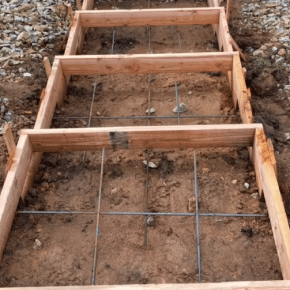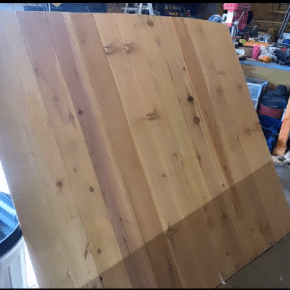Sustainable landscaping is not just a trend; it’s an essential practice that contributes to the well-being of our environment and community. In Redding, California, where diverse flora and fauna thrive, adopting sustainable landscaping practices can significantly impact both the ecosystem and local aesthetics. This comprehensive article delves into the myriad benefits, techniques, and expert insights into sustainable landscaping specifically tailored for Redding.

Understanding Sustainable Landscaping
What is Sustainable Landscaping?
Sustainable landscaping refers to designing and maintaining outdoor spaces in a way that conserves resources, minimizes waste, and enhances ecological health. It's about creating beautiful landscapes that work harmoniously with nature while reducing environmental footprints.

Key Principles of Sustainable Landscaping
Water Conservation: Utilizing drought-resistant plants and efficient irrigation systems to minimize water use. Soil Health: Improving soil quality through composting and organic amendments. Biodiversity: Encouraging a variety of plant species to support local wildlife. Native Plant Use: Incorporating native plants that require less maintenance and are more resilient to local climate conditions.The Importance of Sustainable Landscaping Practices in Redding, CA
Redding's climate presents unique challenges such as high temperatures and seasonal droughts. Therefore, implementing sustainable landscaping practices is crucial for several reasons:
Environmental Protection: Protects local ecosystems by preserving native wildlife habitats. Resource Efficiency: Reduces reliance on water and chemical fertilizers. Aesthetic Appeal: Enhances property value through attractive landscape design. Community Resilience: Builds community awareness toward environmental stewardship.Benefits of Sustainable Landscaping in Redding, CA
Enhancing Property Value
Investing in sustainable landscaping can increase the value of your home significantly. Properties with well-maintained gardens often sell faster and for higher prices than those without.
Reducing Water Consumption
With California facing ongoing drought conditions, sustainable landscaping practices such as xeriscaping—using drought-tolerant plants—can drastically reduce water consumption.
Promoting Biodiversity
Sustainable landscapes provide habitats for various species including birds, butterflies, and beneficial insects which contribute to pollination.
Improving Air Quality
Plants naturally filter pollutants from the air; incorporating trees and shrubs into your outdoor space can enhance air quality significantly.
Choosing the Right Plants for Your Landscape
Native Plants vs Non-Native Plants
Why Native Plants Matter
Native plants are adapted to the local climate and soil conditions in Redding. They require less water and maintenance compared to non-native species.
Examples of Native Plants for Redding Landscapes
- California Poppy Manzanita Oak Trees
Selecting Drought-Resistant Species
Choosing drought-resistant plants ensures that your landscape remains vibrant even during dry spells.
Effective Water Management Techniques
Implementing Drip Irrigation Systems
Drip irrigation delivers water directly to the plant roots, minimizing evaporation losses—ideal for gardens focused on sustainability.
Rainwater Harvesting Systems
Collecting rainwater can Pergola Installation Near Me Outdoor Artisans provide an excellent resource for watering gardens during dry spells without the need for municipal water supplies.
Soil Health Maintenance Strategies
Composting: An Eco-Friendly Approach
Creating compost from kitchen scraps or yard waste enriches soil fertility while reducing landfill waste; it's a win-win!
Mulching Techniques for Soil Health
Applying organic mulch helps retain moisture, suppress weeds, and improve soil structure over time.

Landscape Design Ideas Using Sustainability Principles
Creating Outdoor Spaces with Functionality & Beauty
Incorporating seating areas or paths made from permeable materials can enhance usability while promoting ecological health.
Integrating Hardscaping Elements Wisely
- Pergola Installation Near Me Patios from Recycled Materials
These elements can be designed sustainably while offering functional spaces within your garden.
Outdoor Landscaping Services in Redding, CA: A Key Resource
Finding local services specializing in sustainable practices is critical when planning your landscape design.
Local Expertise Matters
Companies focused on eco-friendly landscaping understand the unique challenges posed by Redding's environment better than generic services could ever do.
Questions to Ask Your Landscaping Provider
What sustainable practices do you implement? Do you have experience with native plants? Can you assist with rainwater harvesting systems?Long-Term Maintenance for Sustainable Landscapes
Maintaining a sustainable landscape requires commitment but pays off in reduced costs over time due to lower resource usage!
Seasonal Care Tips
- Prune native plants at appropriate times Monitor irrigation systems regularly Mulch annually to suppress weeds
Community Engagement Through Sustainable Practices
Getting involved with community efforts promotes awareness about sustainability beyond just individual yards.
Participating in Local Projects
Join community clean-up days or tree planting events organized by local environmental organizations!
Challenges Faced When Adopting Sustainable Landscaping Practices
While there are numerous benefits to creating a sustainable landscape, challenges may arise:
Initial Costs Consideration
Investing upfront may seem daunting but consider long-term savings on water bills!
Finding Financial Assistance
Research available grants or programs aimed at encouraging eco-friendly modifications within residential properties!
Case Studies of Successful Landscapes in Redding
Learn from local homeowners who’ve successfully implemented sustainable practices:
| Homeowner | Practices Implemented | Outcomes | |-----------|----------------------|----------| | Smith Family | Xeriscaping + Rainwater Harvesting | Reduced water bill by 40% | | Johnson Residence | Native Plant Garden + Composting | Enhanced biodiversity |
FAQs about Sustainable Landscaping Practices in Redding, CA
What are some easy ways to start my own sustainable garden? Begin with composting kitchen scraps or selecting native plants suited for your area!
How does using native plants benefit my yard? Native plants require less maintenance & are better suited for local wildlife!
Can I install a drip irrigation system myself? Yes! Many DIY kits are available at garden centers; just follow instructions carefully!
Is it expensive to maintain a sustainable garden? Initial investment might seem high but overall cost savings on utilities will offset expenses over time!
What role do hardscaping elements play in sustainability? Properly designed hardscaping can manage runoff while providing functional outdoor spaces efficiently!
Are there any local organizations promoting these practices? Yes! Groups like ‘Friends of the River’ frequently host workshops focused on sustainability initiatives across Redding!
Conclusion: A Call To Action For Sustainable Landscaping In Redding
Embracing sustainable landscaping practices not only benefits individual homeowners but also strengthens community ties while protecting our precious environment! By investing time into learning about effective methods suitable specifically around here—and seeking out professional assistance where necessary—we can all contribute positively toward preserving this beautiful part of California! So why not start today?
This extensive guide highlights how vital it is to adopt sustainable landscaping practices tailored explicitly towards enhancing life quality within our neighborhoods here in sunny Redding! With every little change we make—from choosing appropriate plants down through installation techniques—we're paving pathways toward healthier ecosystems ready for generations yet unborn!